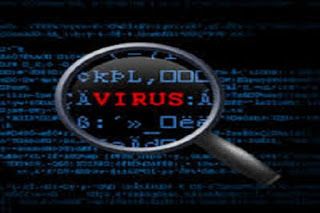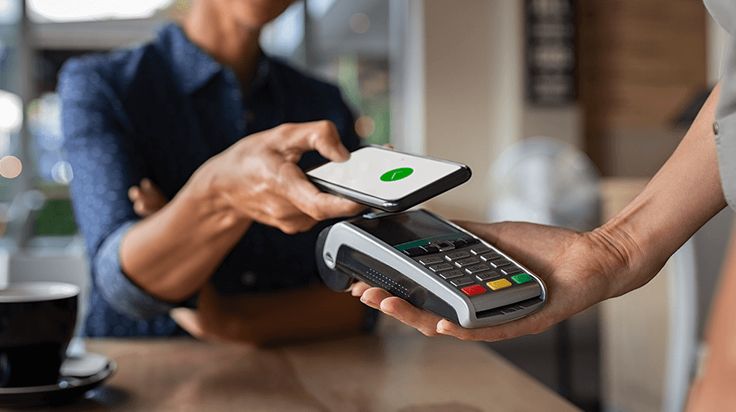A potentially unwanted program (PUP)-
Is a piece of software that is also downloaded When a user downloads a specific program or application. PUP is similar to malware in that it will cause problems when it is downloaded and installed.
Generally, PUPs have undesirable effects on a user’s computer. Once downloaded, a PUP may run background processes that slow the computer down, or it may display annoying advertisements. The sole purpose of these applications is not discovered until they have been installed and run.
Most often, PUPs are downloaded and installed with legitimate applications, and users are unaware of these additional Wanted program such as adware, browser parasites, spyware and other applications at install themselves on a computer without the user’s informed consent. Spyware In most cases, Spyware installs itself on your computer in the same watch Trojan horse does.

Spyware spies on everything you do: paying your bills of watching online videos, using Facebook, etc. It compiles this information and to a database that then affects your web browsing. Depending on your preferences your browsing history, the database will suggest promotional offers or other see Spyware can also download and install viruses on your computer or open phone when you are surfing the web.
Adware Generically adware is a software application in which advertising banned are displayed while any program is running. Adware can automatically downloaded to your system while browsing any website and can be viewed through pop-up windows or through a bar that appears on a computer screen automatically Adwares are used by companies for marketing purpose. adware is not typically use for criminal activities. Zango Search and Purity Scan are examples of adware program that open a partner site’s Web pages or display the partner’s pop-up ads when certain keywords are used in Internet searches.
Browser parasite is a program that can monitor and change the settings of a user browser. Changing the browser’s home page or sending information about the site visited to a remote computer. Browser parasites arc often a component of adware. example, Web search is an adware component that modifies Internet Explorer default home page and search settings.
Phishing and Identify theft:
Phishing: It is any deceptive online attempt by a third party to obtain confidental information for financial gain. It is usually done through email. The goal is to sensitive data like credit card and login information, or to install malware on victim’s machine. Phishing is a common type of cyber attack. Phishing attack typically do not involve malicious code but instead rely on straight for misrepresentation and fraud, so-called “social engineering” techniques. One of most popular phishing attacks is the e-mail scam letter.
Thousands of other phishing attacks use other scams, some pretending to be PayPal, or Citibank writing to you for “account verification” (known as phishing.” or targeting a known customer of a specific bank or other ty business), Click on a link in the e-mail and you will be taken to a Web site count by the scammer, and prompted to enter confidential information about your account such as your account number and PIN codes. On any given day, millions of phishing attack e-mails arc sent, and, unfortunately, some people are and disclose their personal account information.
Phishers rely on traditional “con man” tactics, but use e-mail to trick recipe a voluntarily giving up financial access codes, bank account numbers, area numbers, and other personal information. Often, phishers create (or “spoof”) a Web site that purports to be a legitimate financial institution and cons users into entering financial information, or the site downloads malware such as a keylogger to the victim’s computer.
Phishers use the information they gather to commit fraudulent acts such as charging items to your credit cards or withdrawing funds from your bank account, or in other ways “steal your identity” (identity fraud). Phishing attacks are a common form of e-commerce crime and reached record-setting highs in 2012, according to the Anti-Phishing Working Group
Hacking and Cyber vandalism: Hacking is identifying weakness in computer systems or networks to exploit its weaknesses to gain access.
Example of Hacking: Using password cracking algorithm to gain access to a system. The hacking can be done on single systems, a group of systems, an entire LAN network, a website or a social media site or an email account. The intent of hacking is mostly mala fide ex. criminal or malicious intent.
Either to commit some fraud or to cause some financial or reputational harm to the person, group or entity so hacked. Many a time, hacking is also defined as a form of cyber or internet crime which is punishable by law. To better describe hacking, one needs to first understand hackers. One can easily assume them to be intelligent and highly skilled in computers. In fact, breaking a security system requires more intelligence and expertise than actually creating one.

Hacker: An individual who intends to gain unauthorized access to a computer system. Groups of hackers called tiger teams are sometimes used by corporate security departments to test their security measures. Hackers are classified according to the intent of their.
White hats: good hackers who help organizations locate and fix security
Black hat: hackers who act with the intension of causing harm.
Grey hat: That who believes they are pursuing some grater good by breaking in and revealing flaws. Gray hats discover weakness in a system security and then publish weakness without disrupting the site or attempting to profit from their
Hacktivist: A hacker who use hacking to send social, religious, and political messages This process is called Hacktivism. This is usually done by websites and leaving the message on the hijacked website.
Cracker: within hacking community a term typically used to denote a hacker with criminal intent
Cyber vandalism: Cyber vandals are individuals who damage information infrastructures purely for their own enjoyment and pleasure.
Their primary motivation is not financial:
it is the desire to prove that the achievement could be accomplished Once inside they leave their mark so there is no denying their presence. Normally affected site must be shut down and repaired before it can be returned to normal operation. A data breach occurs whenever organizations lose control over corporate information to outsiders. According to Symantec, data about more than 230 million people were exposed in 2011 as a result of data breaches. Breaches caused by hacker attacks were responsible for exposing more than 187 million identities.
Credit Card Fraud/Theft:
Credit card fraud is a form of identity theft in which an individual uses someone else’s credit card information to charge purchases, or to withdraw funds from account. Credit card fraud also includes the fraudulent use of a debit card, and may accomplished by the theft of the actual card, or by illegally obtaining the cardholder account and personal information, including the card number, the card’s security number, and the cardholder’s name and address.

As online shopping and bill paying has skyrocketed in popularity, there is no longer need to possess a physical credit card or debit card to make purchases, and it possible even to open a financial account, and obtain credit cards solely through online transactions.
Because of this, criminals able to obtain enough present information about other individuals may use that information to commit credit fraud by opening new accounts, or having new cards sent to them on ex accounts But today, the most frequent cause of stolen cards and card information is systematic hacking and looting of a corporate server where the information millions of credit card purchases is stored.
For instance, in March 2010, card numbers in American history. Along with several Russian co- -conspiration Gonzalez was sentenced to 20 years in prison for organizing the largest theft of cross Gonzalez broke into the central computer systems of TJX, BJs, Barnes & Noble, and other companies, stealing over 160 million card numbers and costing these firms over $200 million in losses. A central security issue of e-commerce is the difficulty of establishing the customer’s identity. Currently there is no technology that can identify a person with certainty.
Until a customer’s identity can be guaranteed, online companies arc at a much higher risk of loss than traditional offline companies. The federal government has attempted to address this issue through the Electronic Signatures in Global and National Commerce Act (the “E-Sign” law), which gives digital signatures the same authority as hand-written signatures in commerce. This law also intended to make digital signatures more commonplace and easier to use.
In Conclusion –
Generally, PUPs have undesirable effects on a user’s computer. Once downloaded, a PUP may run background processes that slow the computer down, or it may display annoying advertisements. The sole purpose of these applications is not discovered until they have been installed and run. Credit card fraud is a form of identity theft in which an individual uses someone else’s credit card information to charge purchases, or to withdraw funds from account. Credit card fraud also includes the fraudulent use of a debit card, and may accomplished by the theft of the actual card, or by illegally obtaining the cardholder account and personal information, including the card number, the card’s security number, and the cardholder’s name and address.
What is potentially unwanted program?
Is a piece of software that is also downloaded When a user downloads a specific program or application. PUP is similar to malware in that it will cause problems when it is downloaded and installed.
What is the full form of PUP?
potentially unwanted program
NEW POST
FOLLOW ON TWITTER






